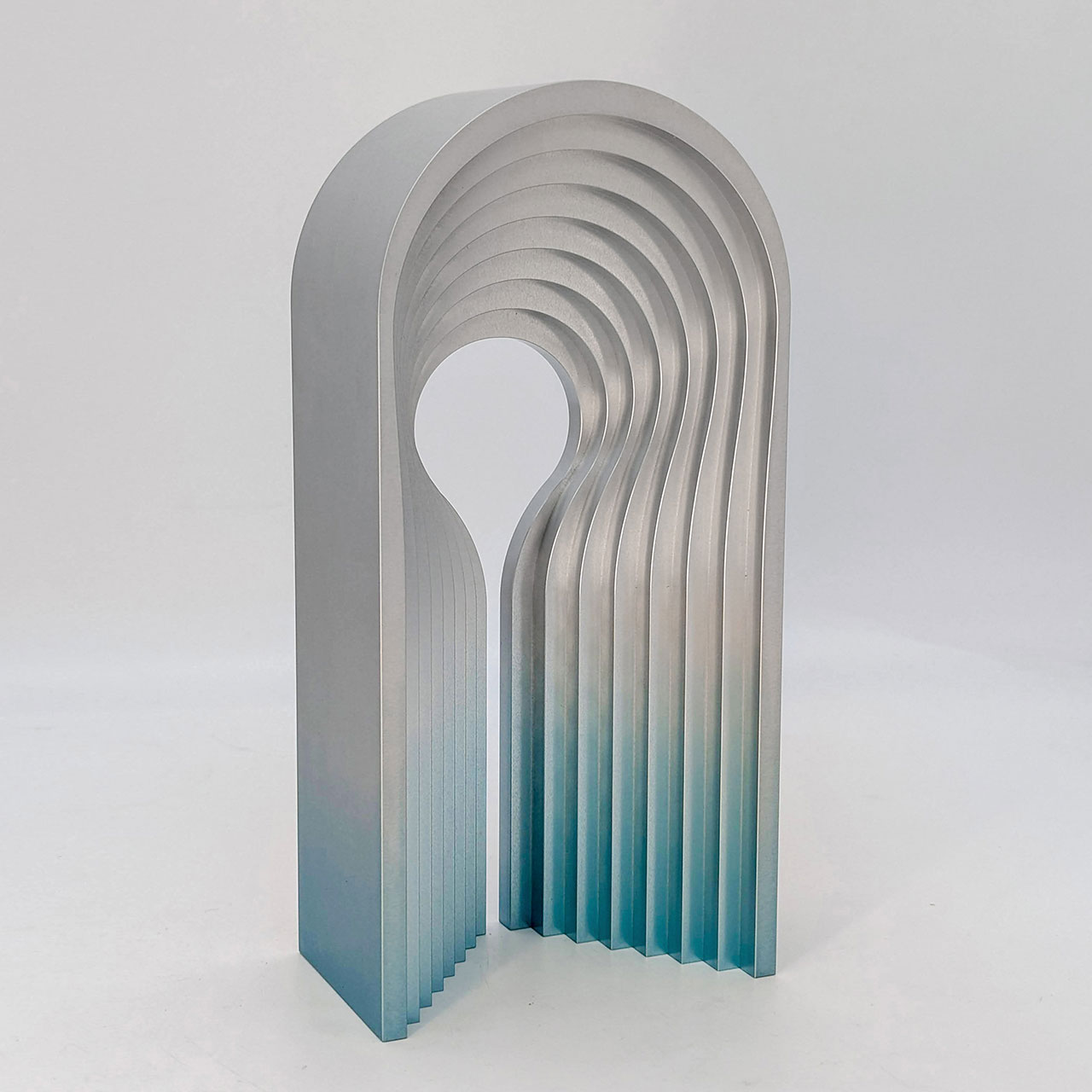Trophies, medals, and celebratory objects – public accolades, in conjunction with their awards ceremonies, have always provided an occasion for those on the receiving end to make a statement. But when the Junior Tennis Foundation tapped Joe Doucet to design a trophy commemorating the Eastern Tennis Hall of Fame’s latest inductees, the multi-hyphenate maker took the opportunity to dignify craft and sustainability within the context of modern sport made accessible to underprivileged, at-risk, and differently abled competitors.
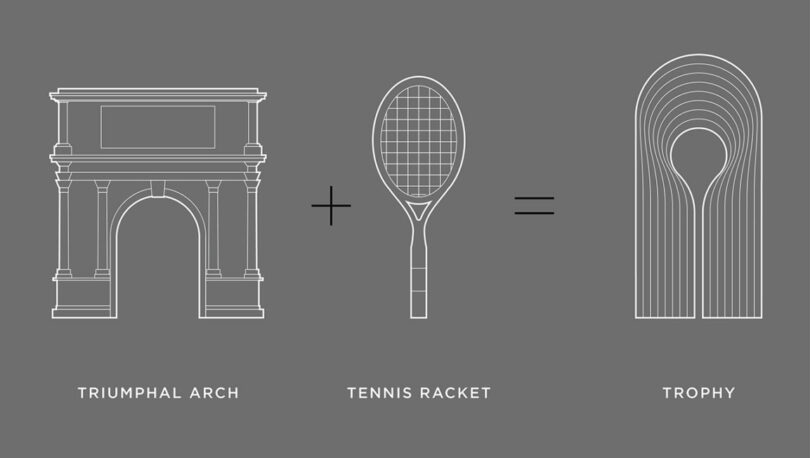
“My connection to this project wasn’t about a personal tennis history, but about a broader mission of supporting youth development,” Doucet says. “Design, to me, is never just about aesthetics – it’s about creating meaningful experiences and supporting positive social impact.”
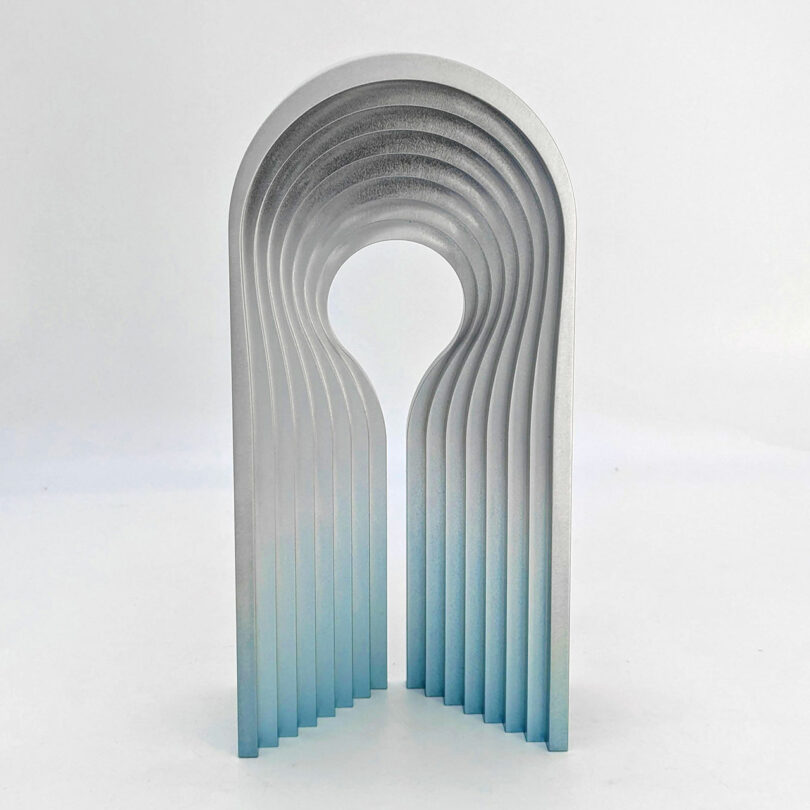
The sculptural artifact is an exercise in semiotics, distilling the tennis racket’s iconic shape into a simple silhouette and blending it with that of an arch – here, understood as a signifier for the Arc de Triomphe, which symbolizes victory. The forms morph from front to back through a series of transformative steps that link the two visual inputs further representing the athlete’s journey to greatness, an ascension to achievement. And while it may appear simplistic, the minimalist design is rigorous in thought and refined in execution. It’s the result of roughly five to seven significant variations that were explored prior to the final fabrication.
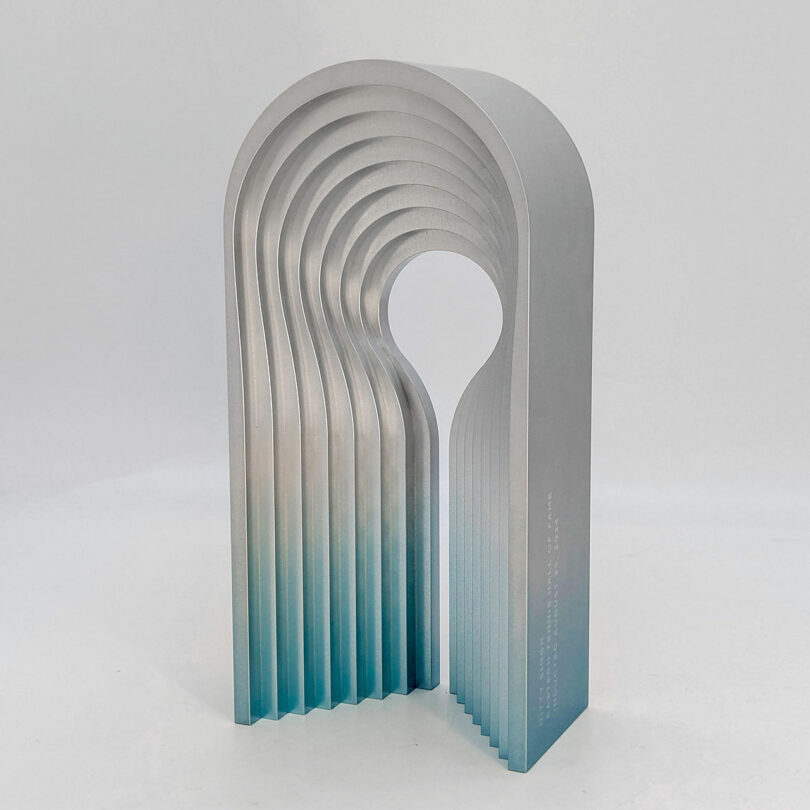
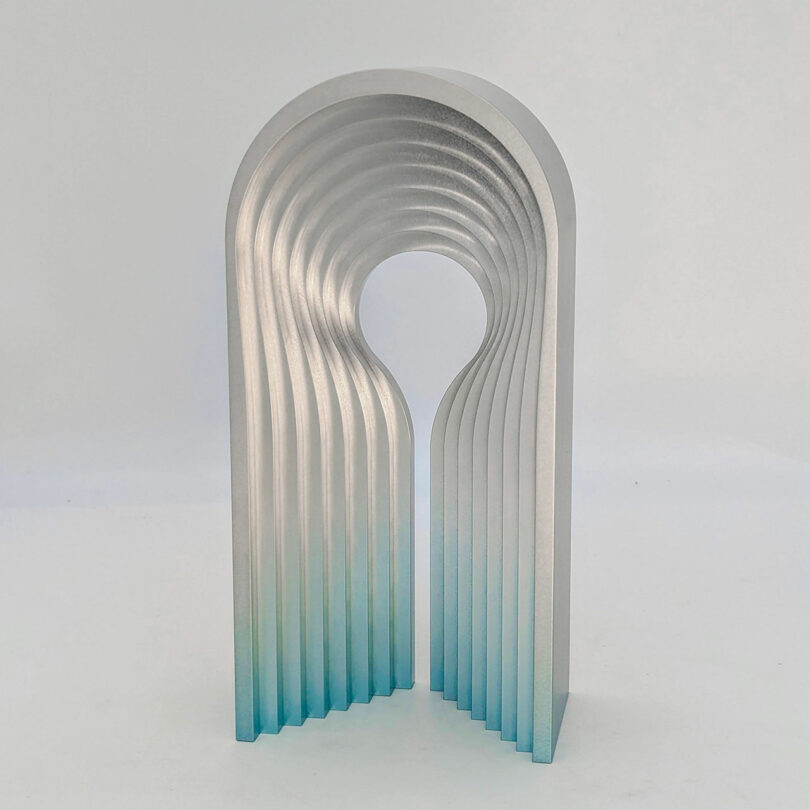
From how it’s visually perceived, to its performative purpose, to eventual production, every facet of the trophy’s impact was considered. But the greatest challenge was maintaining the design’s conceptual integrity while ensuring sustainability. For an object’s beauty is only skin deep if it has no empathy.

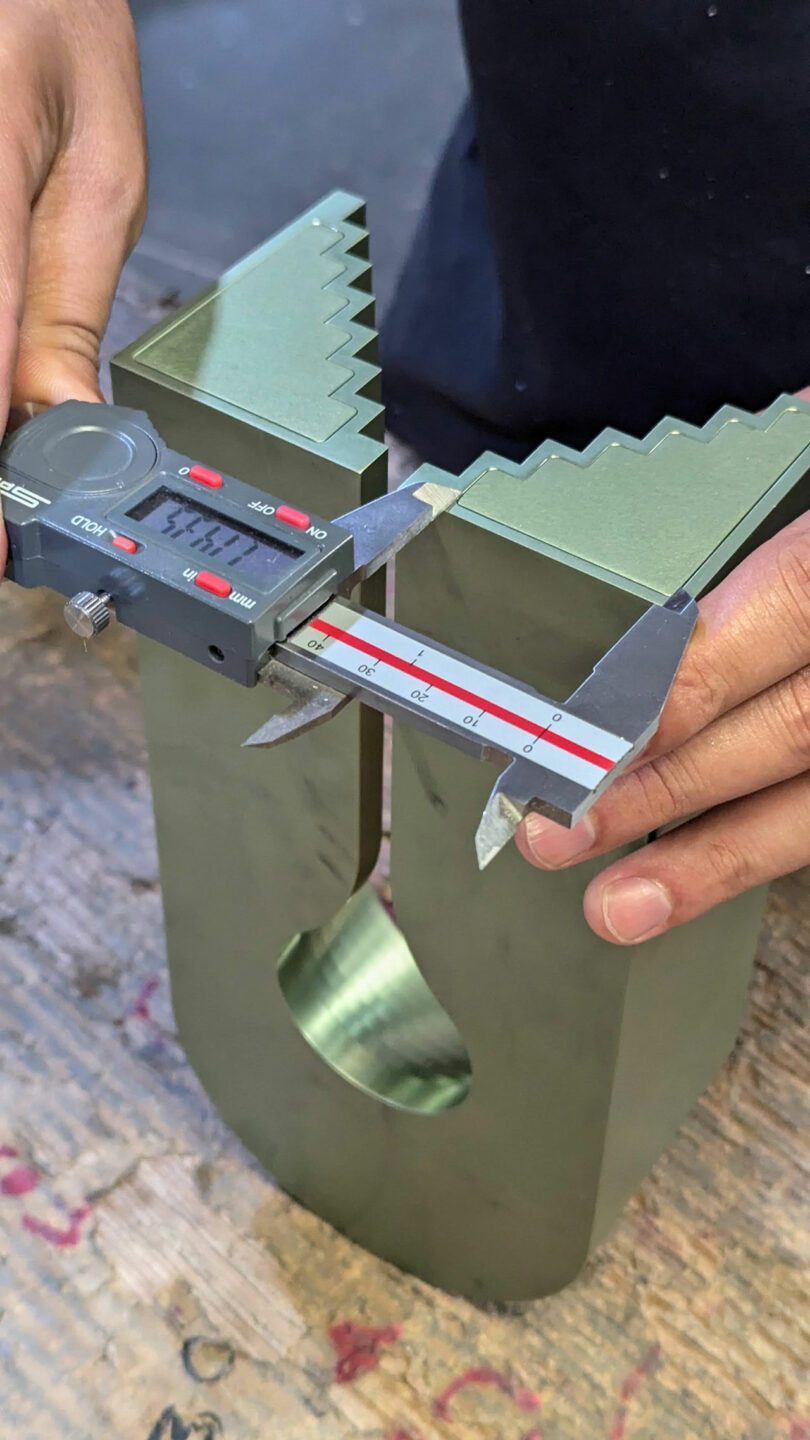
To realize the design, Doucet selected Norsk Hydro aluminum for its over 90% recycled content, pulling from the company’s Spanish Fork, Utah facility, which has one of the lowest carbon footprints of any such facility in North America. Neal Feay, the global leader in creative aluminum and proprietor of the multi-color anodizing process, used their CNC milling expertise to ensure a smooth, sharp, and elegant finish. The manufacturing process was an art form as well, with each progressive step mathematically calculated to exacting tolerances enabling the trophy to be more like an architectural element than a traditional sporting award.
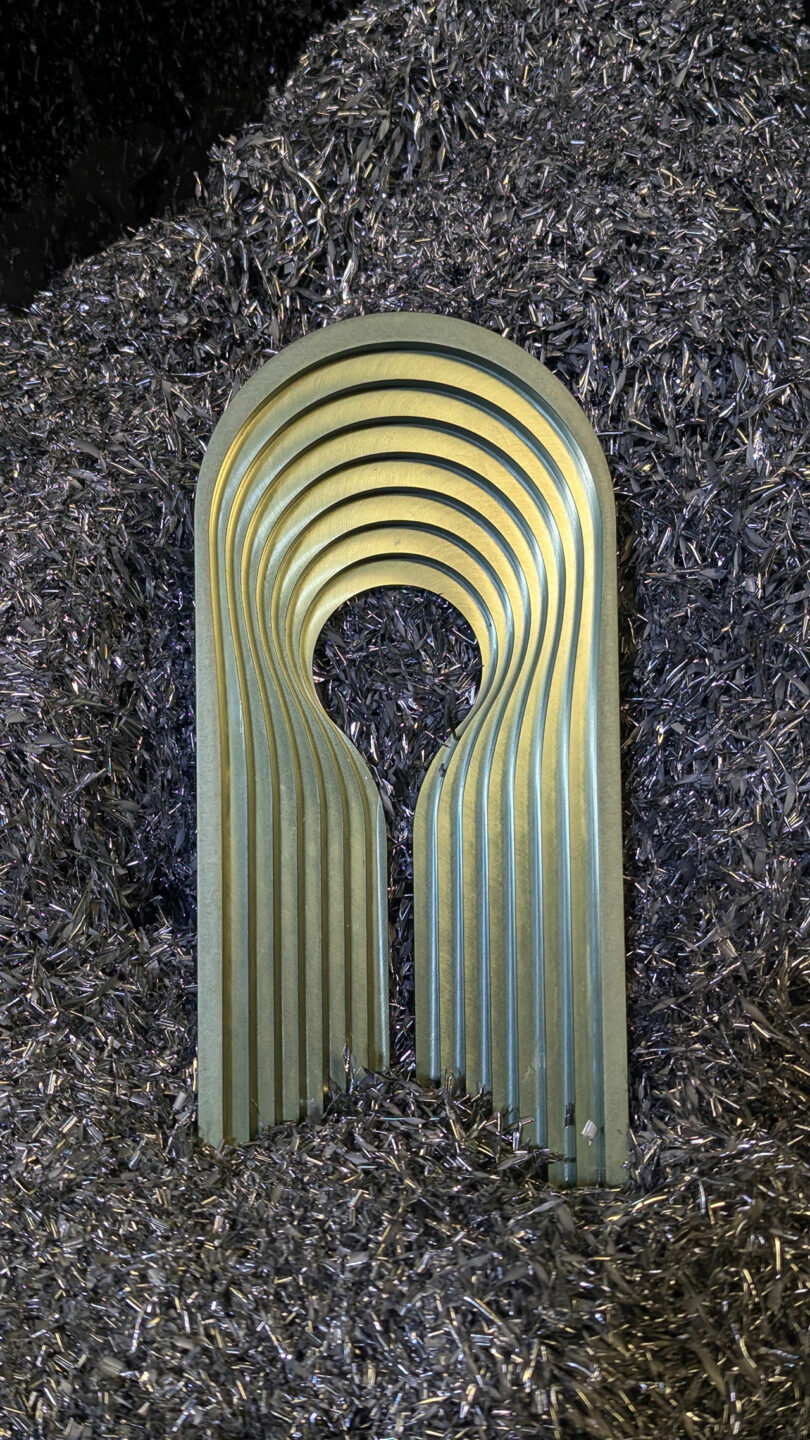
“What surprised me most was how universally the concept was received,” he continues. “I believe we’re moving towards design that isn’t just about the object, but about the story it tells and the values it represents. The future of design is about creating objects that are not just seen, but truly experienced and understood.”

Joe Doucet
To learn more about the designer, visit joedoucet.com.
Photography provided by Neal Feay; Portrait Courtesy of Joe Doucet.

